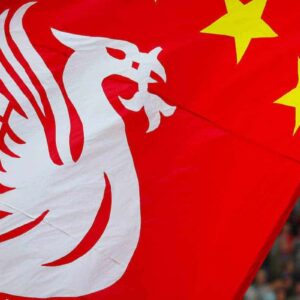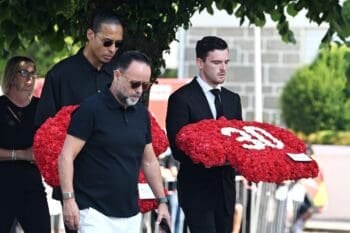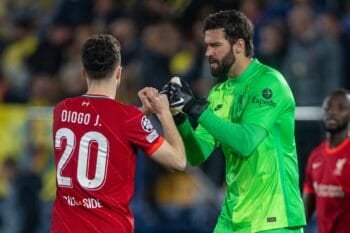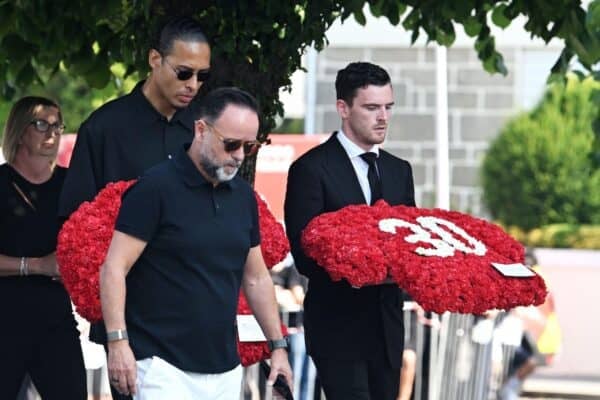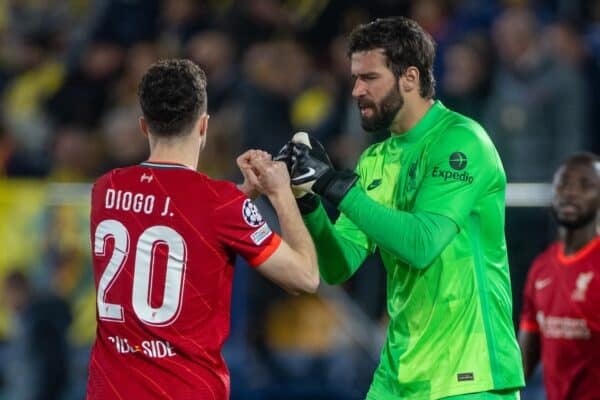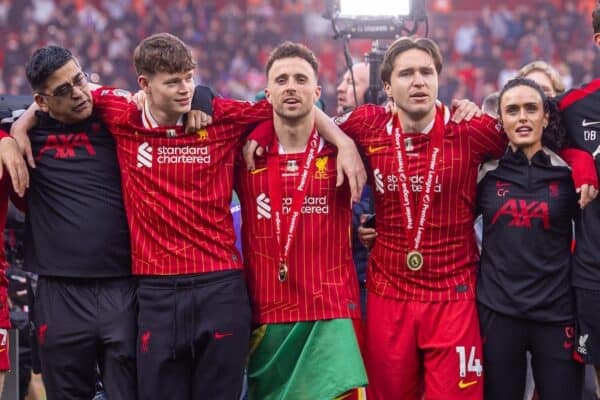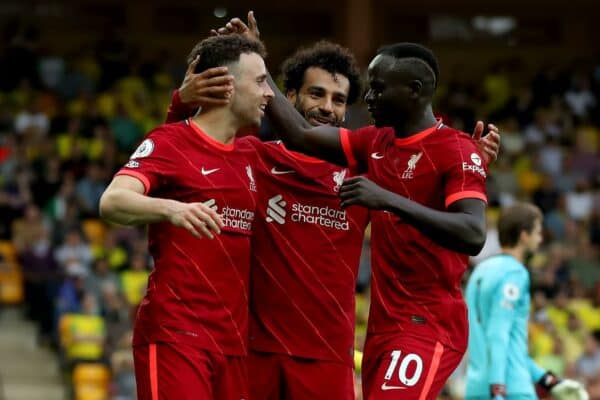Liverpool fan Neil Dunkin, author of the book ‘Anfield Of Dreams‘, continues his mini-series of the World’s most famous football stadiums. Last week it was The Maracana in Brazil, this week it’s Mexico’s Azteca Stadium…
IN ANYONE’S list of must-see stadia, the Estadio Azteca in Mexico City, the only ground to have hosted two World Cup finals, would be right up there with the best and in 1994 I achieved my ambition of seeing a match there.
Opened in 1966, the Azteca is quite simply a structural colossus. Some 100,000 tons of concrete ‘“ enough for four old Wembleys ‘“ was used to build the two-tier bowl, separated by a circle of 850 double-decker private boxes. Boasting a 115,000 capacity, most beneath a concrete roof covering the highest number of seats in any sports arena, the construction technique left it unscathed by the cataclysmic earthquake in 1985 that claimed 20,000 lives in the capital.
Apart from the national side, three league teams play there ‘“ Atlante, Necaxa and América, the country’s most successful club. Since América are looked upon as the team of the government and establishment, they are despised by their biggest rivals in the capital, the UNAM university side, whose home is the 70,000-seat Olympic Stadium, the athletics venue for 1968’s Games.
Football was introduced to Mexico in the early 1900s by Cornishmen working in Hidalgo’s silver mines and now it is the No 1 sport, the most eagerly anticipated duels pitting América against any team from Guadalajara, the industrial powerhouse where 4 million live. By pure coincidence, my Azteca visit coincided with a clásico, a match between the capital’s kingpins and Tecos, Guadalajara’s university team, to determine who would go through to the championship final.
Reputedly Mexicans are only punctual for football and funerals, and on my arrival at the ground for the evening kick-off, crowds were milling around in something of a fiesta atmosphere.
Seeking a quiet turnstile, I walked leisurely around the stadium.

Outside one gate, 30-or-so Américanistas had gathered, hard-core supporters in blue and yellow colours, some holding long poles adorned with flags, but one ultra stood out because he had a bird of prey clamped on a leather gauntlet on his right arm.
Even though I’d slugged a couple of beers and a tumbler of boot-melting mezcal in a cantina near the ground, I wasn’t hallucinating. What a bizarre sight. Conceivably its owner didn’t feel too happy with the team and planned to give them the bird.
As I stared at this magnificent creature’s beautiful head with a hooked beak, it was startled by something, rattling its chains and flapping its wings. No angler’s tale ‘“ the wingspan was about four feet.
Musing on why anyone should take that into a match, I strolled to an entrance where nobody was queuing and paid to go in. Hauling myself up a long staircase, I found myself in the Azteca’s top tier. Above, its roof flowed seamlessly around the stands, without beginning, without end, while below, the oval of turf offered an emerald counterpoint to the elliptical grey sky.
Poised high over the centre spot lurked a monstrous spider, with splodgy black body and straggly legs: the loudspeaker console for the public address system. Despite being suspended from steel cables at a considerable height, I speculated whether a ball had ever hit it and, if so, what the laws stipulated for such an eventuality. Dropped ball? Free kick?
Towards the summit of the terrace, I sat down on the edge of a precipice, staring around this awesome arena. Even though it was getting dark, my thoughts slipped back to a brilliantly sunny afternoon in 1970 when I watched a stellar game on telly.
Here on this lush pitch, in the first World Cup final broadcast in colour, Brazil gave a master class in attacking football, a 4-1 demolition of Italy, to become champions for the third time and outright holders of the Jules Rimet trophy. In their green and yellow jerseys, Pelé, Jairzinho, Rivelino, Tostao, Gerson and Clodoaldo, the planet’s six finest footballers, conspired with their team-mates to destroy the Italians.
Pelé opened the scoring in the 18th minute, leaping like a black salmon to head Rivelino’s cross. After Boninsegna equalised, the game was on a knife-edge until the 67th minute when Jairzinho and Gerson carried out a scissor move that finished with Gerson smashing the ball in from 18 yards. Next, Pelé headed to Jairzinho, who slotted home, and with four minutes on the clock, Carlos Alberto capped the afternoon with his first goal of the tournament. In a move involving nine Brazilians, their skipper ran on to a deliciously weighted lay-off from Pelé and drove the ball past Albertosi.
The maestros of futebol had given their art’s purest performance. From thereon, every football addict, apart from Argentinians, was a fan of Brazil.

Here, too, England came up against Argentina in the 1986 World Cup quarter-final, their first meeting since the Falklands War, and in front of a jury of 114,000, Maradona condemned himself with his ‘œhand of God’, then went on a wondrous dribble from his own half to score again.
Despite these body blows, England mounted a stirring rally, Barnes sending over a pinpoint cross for Lineker to head in and delivering another centre which our striker narrowly failed to nick in. England packed their bags while Argentina moved into the Azteca’s second final, defeating West Germany 3-2.
Now in that same stadium, a setting for high drama and perpetual disgrace, I was looking forward to the teams coming out.
Until someone pulled a plug; all the lights went out.
Must be a failure in the electricity grid, I thought. Happens in Latin America.
The Azteca, about two-thirds full, was black and the crowd fell silent.
Not for long. From directly behind each goal, a laser beam lanced into the air, striking the underside of the roof where it began to swell. As these pinpoints of light expanded, they metamorphosed into two gigantic birds, wings outspread, hovering over both ends of the ground.
Having assumed form, they took flight, moving slowly at first around the roof and picking up speed until, like pursuit cyclists on opposite sides of a track, they were chasing each other.
By now, music was blasting out of the spider and 70,000 fans ‘“ Camisa 12, in Spanish parlance, Shirt No 12 or the 12th man ‘“ were singing lustily, interspersing their choruses with cries of ‘œAmérica!’ It was the Azteca’s YNWA.
With the birds sweeping above my head in pursuit of quarry, I now grasped the significance of the eagle on that character’s arm; a mascot for the team, the Ãguilas, or Eagles. But Selhurst Park this was not.
When a thunderous roar of ‘œAmérica!’ ended the song, the Azteca’s floodlights turned night into day, the laser eagles flew back into their electronic cages and both teams ran out.
Because of travel difficulties in a vast country like Mexico, away support at games is negligible but 20 or so Tecos aficionados were sitting nearby. When these Guadalajarans chanted, there was no animosity, no hint of tension, and I couldn’t spot any police either, testimony to the absence of hooligans in Mexican football.
This laid-back mood was enhanced by a civilised refreshments service for every seat, cheap or expensive. No hustling for a Bovril deep in the stand, missing a penalty. White-coated waiters were awaiting your call. Put your arm up to attract attention and they’d bring whatever you requested ‘“ beer, taco, pizza, chocolate, chewing gum, ice cream, the full enchilada’¦
The visiting team’s complete title was Club de Fútbol Tecos de la Universidad Autónoma de Guadalajara and their knot of supporters knew better than to launch into a chant of ‘œGive me a C, give me an L, give me a U ‘¦’ I’d have been back in my beloved Anfield by the time they’d finished. Anyway, Tecos did not require interminable vocal backing. Way down, down, down yonder on the turf, they plucked the Eagles 3-1 and were a step closer to their first championship.
By the final whistle, that yardstick of boredom, the Mexican wave, had not rippled through the crowd and once both sets of fans had saluted their sides, the Guadalajaran faction ambled out with the Américanistas as if they’d all been watching Toy Story at the multiplex.
With justification, the Azteca can take pride in its motto, ‘œEstadio seguro, estadio amable, Safe stadium, friendly stadium’. Long may it remain so.
Neil Dunkin’s Anfield Of Dreams: A Kopite’s Odyssey From The Second Division To Sublime Istanbul has been shortlisted for the British Sports Book Awards 2009 in the Best New Writer category. You can buy Anfield Of Dreams for just £6.94.

